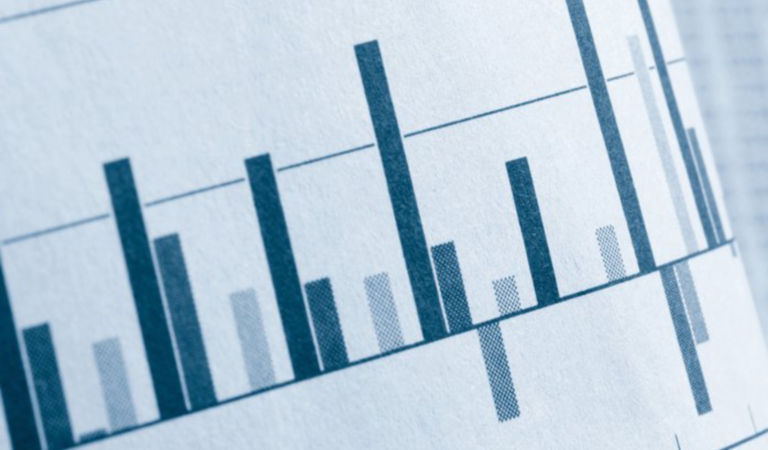Equities
Global equities (+1.4%) rose during the month, ending April with an 8.7% gain year to date. Investors were encouraged by mostly resilient corporate earnings and moderating inflation expectations amid a decline in commodity prices. Markets remained confident in the stability of the banking sector despite the closure of another US financial institution at the end of April, while concerns about the health of the commercial real estate market mounted due to higher office vacancies, falling property values, and rising interest rates. OPEC+ unexpectedly announced a crude oil production cut, a precautionary measure aimed at supporting the stability of the oil market. Major central banks, including the US Federal Reserve (Fed) and the European Central Bank (ECB), are expected to raise interest rates again in May as policymakers remain committed to curbing inflation. However, the Bank of Japan (BOJ) kept its core stimulus measures unchanged at the first meeting led by Governor Kazuo Ueda, who announced a longer-term review of the bank’s policies. China’s economy rebounded, with first-quarter GDP growing 4.5% year over year after the government abruptly lifted COVID curbs in December and eased restrictions on tech firms and property developers.
US
US equities (+1.6%) ended higher. Despite a greater risk of recession in 2023, markets were supported by better-than-expected earnings from banks and large technology companies, resilient consumer spending, modest softening in the labor market, and cooling inflation. US economic growth notably slowed in the first quarter; US GDP rose at a 1.1% annualized pace, well below the consensus forecast of 1.9% and the 2.6% growth rate in the fourth quarter, as a pickup in consumer spending was tempered by tepid business investment. In March, headline inflation was the lowest in nearly two years, with the Consumer Price Index (CPI) rising 5.0% from a year earlier, down from 6.0% in February. The Fed’s preferred measure of consumer inflation — the core Personal Consumption Expenditures Price Index — moderated only slightly to 4.6%, from 4.7%. Persistently high core inflation, particularly in the labor-intensive services sector, combined with reduced bank stresses and ebbing economic growth, generated uncertainty about the magnitude of Fed rate hikes. Of the 53% of companies in the S&P 500 Index that had reported first-quarter earnings, the blended year-over-year earnings decline for the index was 3.7%, better than expectations of a 6.7% decrease. The forward 12-month price-to-earnings ratio for the index stood at 18.1. Political tensions escalated after the Republican-controlled House of Representatives passed a sweeping debt-limit and spending-cuts plan, setting the stage for high-stakes negotiations with Democrats to lift the cap on government borrowing.
Economic data released in April showed that the US economy continued to slow. The labor market remained tight but showed signs of softening. In March, the unemployment rate dipped to 3.5% as the participation rate ticked higher, while robust hiring in the leisure & hospitality and health care industries drove headline nonfarm payrolls up by 236,000, after an outsized gain of 326,000 a month earlier. Annual wage growth eased to 4.2%, from 4.6% in February, and the number of job openings fell to 9.9 million in February — the lowest since May 2021. Retail sales declined by 1.0% in March, worse than consensus estimates of a 0.5% drop, suggesting that shoppers are becoming more discerning about their discretionary spending. Overall, consumer spending was flat as a modest acceleration in services outlays was offset by a pronounced decline in goods purchases. The Conference Board’s Consumer Confidence Index slid to 101.3 in April, as consumers’ outlooks for business, income, and the labor market were notably more pessimistic, even as their relatively favorable assessment of current conditions improved. The housing market continued to stabilize in March, although pending and existing-home sales declined amid a lack of inventory. Purchases of new homes unexpectedly increased to the highest level in a year, and home-builder sentiment in April improved for the fourth straight month as limited housing supply spurred demand for new housing.
The Institute of Supply Management (ISM) Manufacturing Index lifted from a three-year low, to 47.1 in April, amid a rebound in employment. The services sector expanded at a much slower pace in March, with the ISM Services Index dropping nearly four points, to 51.2, amid weaker growth in new orders and softer business activity. However, the Flash Composite Purchasing Managers’ Index (PMI) from S&P Global revealed that services-sector output in April increased at the fastest pace in a year; an upturn in demand was accompanied by a rekindling of inflation pressures in both manufacturing and services. The National Federation of Independent Businesses Small Business Optimism Index slipped to 90.1, with greater economic uncertainties leading companies to dial back plans for capital spending and hiring, which could alleviate some of the labor market tightness and restrain wage increases.
Eight of the 11 sectors in the S&P 500 Index (+1.6%) posted positive results. Communication services (+3.8%) was the best-performing sector, led higher by interactive media & services (+6.5%). Consumer staples (+3.6%) was another notable outperformer, as household products (+6.3%) and beverages (+3.5%) groups contributed to returns. Financials (+3.2%) rose, driven by financial services (+5.0%). Industrials (-1.2%) was the worst-performing sector, led lower by air freight & logistics (-4.4%). Consumer discretionary (-0.9%) also declined, most notably automobiles (-18.7%).
Europe
European equities (+2.6%) advanced. The eurozone narrowly avoided a technical recession in the first quarter as GDP grew by a scant 0.1% compared to the fourth quarter (1.3% annually), supported by lower energy prices and fiscal stimuli. Most economists forecast that the region’s economic growth will remain subdued for the remainder of the year due to the impact of tighter monetary policy and more restrictive credit conditions. Preliminary estimates showed that eurozone annual headline inflation inched higher to 7.0% in April after moderating to 6.9% in March, but core inflation declined slightly to 5.6%. Persistent price increases across Europe created uncertainty about the magnitude of interest-rate increases by the ECB. Investors assessed the implications of the recent banking turmoil on the commercial real estate sector, which is under pressure from rising borrowing costs and declining property values. Several European leaders met with Chinese President Xi Jinping to discuss trade and address deep concerns about military escalation in the Taiwan Strait and the ongoing war in Ukraine.
Europe’s manufacturing sector continued to contract in April as the eurozone Manufacturing PMI fell to 45.8, from 47.3 in March. Production volumes declined for the first time since the beginning of the year, and faltering demand led new orders to decline at the sharpest pace in four months. However, the eurozone Flash Composite PMI rose to an 11-month high in April, indicating that the region’s economy gained momentum. Growth was entirely driven by the services sector, which registered its strongest expansion in a year. Prices charged for goods and services remained highly elevated, but the rate of price increases decelerated by the most in two years. Optimism among manufacturers and service providers continued to wane from February’s 12-month high but remained notably higher compared to the end of 2022 amid reduced anxiety about energy prices, improved supply chains, and ebbing inflation. The European Commission’s Economic Sentiment Indicator was stable in April as higher consumer confidence was offset by lower confidence among business managers.
In Germany (+1.9%), the Ifo Business Climate Index and the GfK Consumer Climate Indicator continued to improve in April, but the ZEW Indicator of Economic Sentiment unexpectedly deteriorated on concerns about elevated inflation and expectations of tighter credit conditions in the months ahead. German GDP stagnated in the first quarter, while France (+3.1%), Italy (+3.1%), and Spain (+1.4%) saw GDP growth accelerate for the first three months of the year. In France, President Emmanuel Macron’s widely unpopular pension reform was signed into law, but he pledged to discuss wage levels with unions and evaluate measures to boost employment among seniors. In the UK (+3.6%), signs of a cooling job market offered hopes that stubbornly high inflation will begin to decline.
Pacific Basin
Pacific Basin equities (+2.1%) ended the month higher. Australia’s (+1.6%) economic indicators were mixed, with slowing inflation contrasting with strong employment growth. The Reserve Bank of Australia (RBA) paused its most aggressive tightening cycle since 1989 to assess the impact of rate hikes on inflation and the economy but noted that higher rates may still be needed to lower inflation to the bank’s target. Core inflation decelerated to 6.6% year over year in the first quarter, ending five straight quarters of accelerating price pressures, although inflation in the services sector remained persistently high. Consumer confidence surged in April and business sentiment was resilient. Employment growth in March surpassed expectations for a second straight month; the number of jobs increased by 53,000, more than double consensus estimates, underscoring the labor market’s resiliency to the rapid increase in interest rates. The unemployment rate held at 3.5%, near a 50-year low and below forecasts of 3.6%. Australia’s government temporarily suspended a trade appeal against China, signaling improving relations between the two countries.
In Japan (+2.7%), the yen fell, and government bond futures reversed their losses after the BOJ maintained its ultra-loose policy settings in its first meeting under new Governor Kazuo Ueda. The BOJ kept its 0.5% cap on 10-year government bond yields and preserved its short-term policy rate at minus 0.1%. It also removed its guidance on future interest-rate levels and will conduct a “broad-perspective review” of policy, with a planned time frame of around 1 to 1.5 years. Inflation outpaced expectations, with the core CPI in March rising 3.1% from a year earlier, matching February’s gains. A narrower measure of core inflation climbed to a four-decade high of 3.8%, from 3.5%. The BOJ’s Tankan survey for the first quarter showed that sentiment among large manufacturers was the weakest in more than two years. In contrast, the mood for large services providers brightened on hopes for a rebound in tourism and consumption.
In New Zealand (+1.9%), the Reserve Bank of New Zealand (RBNZ) unexpectedly raised interest by 50 bps even as the economy neared recession. Home prices fell at a record annual pace of 10.5% in March, and inflation slowed more than expected, to 6.7% year over year in the first quarter, suggesting the central bank may soon end its aggressive tightening cycle. In Singapore (-0.4%), GDP grew a mere 0.1% in the first quarter, a pronounced slowdown from 2.1% in the fourth quarter. The manufacturing sector experienced its greatest decline in almost three years as activity dropped by 5.2% in the first quarter. The Monetary Authority of Singapore unexpectedly left interest rates unchanged amid fears of a deeper-than-expected slowdown in the domestic economy and broader concerns about weakening global economic growth. Core inflation cooled to 5% in March, a welcome development for the central bank.
Emerging Markets
Emerging markets (EM) equities (-0.7%) moved lower in April. Within EM, Europe, the Middle East, and Africa (EMEA) and Latin America outperformed, while Asia lagged.
EMEA (+4.6%) finished higher as decelerating inflation in eastern Europe sparked hopes for a softer policy stance from central banks, fueling equities. Inflation eased in Poland (+9.3%) and Hungary (+6.1%), as well as in Czechia (+8.7%), where a multi-decade high in the policy rate is building confidence among central bank officials that inflation will return to the bank’s target. In the Arabian Peninsula, the United Arab Emirates (+9.5%) and Saudi Arabia (+6.3%) were supported by positive commentary from the International Monetary Fund (IMF). Saudi Arabia’s efforts to curb its reliance on oil production gained momentum as economic diversification opportunities materialized. In Turkey (-3.8%), President Recep Tayyip Erdoğan canceled his campaign travel plans due to an illness, spurring rumors ahead of the country’s upcoming election in May.
Latin American (+2.0%) equites rose. In Brazil (+2.0%), President Luiz Inácio Lula da Silva pushed for lower interest rates and hinted that the government may change its inflation target, complicating the central bank’s efforts to curtail inflation. In Mexico (+2.5%), subsiding inflationary pressures led to a more accommodative policy outlook. A historically high level of inbound travel, which increased to 2.2% of GDP over the 12 months ending in February, supported economic growth. Colombia (+5.5%) moved higher, with President Gustavo Petro announcing that his coalition with Conservative and Liberal parties in Congress is officially broken. As a result, he asked ministers to resign in a major cabinet reshuffle which may impact the country’s fiscal outlook.
Asian (-1.8%) equities were dragged lower by weakness in China (-5.0%), where stocks fell on concerns about geopolitical tensions and the recent increase in equity valuations amid an uneven economic recovery. China’s first-quarter GDP grew 4.5% year over year, exceeding consensus forecasts and topping the 3% growth rate in 2022, thanks to robust services consumption. However, manufacturing activity unexpectedly contracted in April due to lower demand from abroad and normalizing activity following a quick recovery in the first quarter. The Politburo indicated that economic growth was better than anticipated but called for stronger fiscal policy and more targeted monetary policy, acknowledging that the economic recovery is not strong enough and domestic demand is insufficient. Taiwan (-3.3%) declined as industrial production fell sharply amid slowing global demand. India (+3.7%) is set to become the world’s most populous country, and its economy gained momentum. The IMF forecast India to outperform all major developed and EM economies in 2023, with GDP growth estimated to be 5.9% for the year. The expansion in manufacturing activity accelerated in April, and the CPI dipped to its lowest level in 15 months.
Fixed Income
Elevated inflation readings and ongoing banking turmoil dominated the market tone. Most fixed income sectors outperformed duration-equivalent Treasuries as most economic releases showed signs of improvement and credit spreads tightened.
US economic data releases were mixed, marked by steady core price increases and moderating headline inflation as energy and crude oil prices declined. The current conditions assessment was positive for consumer sentiment, although expectations for high inflation persisted. Retail sales fell sharply, led by declining autos and electronics sales, as cautious consumers cut back on spending. Nonfarm payrolls rose slightly more than anticipated and weekly jobless claims remained low. Aircraft demand lifted durable goods orders and industrial production rose on a surge in utility activity following a return to more seasonable temperatures. The S&P Global Flash US Manufacturing PMI rose into expansion territory, beating consensus estimates. A decline in multi-family projects hurt housing starts, while existing-home sales fell more than anticipated, with the most pronounced declines in the Midwest and West regions. In the eurozone, GDP expanded slightly in the first quarter and consumer confidence improved marginally. Industrial output rose on stronger production of capital goods and consumer nondurables. Germany’s IFO Business Climate Index advanced amid an improved near-term outlook, and an upturn in business activity lifted the Services PMI. In the UK, high inflation persisted, with rising food and energy costs continuing to pressure consumers. China’s industrial production rose, and the CPI ticked down year over year, helped by lower food prices. Japan’s industrial production rose, supported by growth in the motor vehicle industry. Job growth in Canada continued to rise, pushing the unemployment rate down slightly below estimates. In Australia, the unemployment rate held steady as the economy added more jobs.
Most major central banks kept their policy rates unchanged. However, the RBNZ hiked rates by 50 bps, and Sweden’s Riksbank delivered a 50 bps rate hike, indicating that its policy tightening is nearly done. The BOJ maintained its ultra-loose monetary policy settings, accompanied by a dovish statement.
Most global sovereign bond yield movements were limited. US yields were relatively stable after banking turmoil subsided following prompt action by US regulators. UK yields increased the most among developed market sovereigns, following higher-than-expected inflation and wage growth. In EM, Brazil’s yields fell precipitously on optimism surrounding the progress in the government’s proposed spending cap legislation. The Bloomberg TIPS index delivered a total return of 0.11%, and the 10-year breakeven inflation rate decreased by 11 bps, to 2.21%, during the month.
Global credit bonds outperformed duration-equivalent government bonds as spreads tightened. Within the securitized sectors, commercial mortgage-backed securities and asset-backed securities outperformed, while agency mortgage-backed securities underperformed duration-equivalent government bonds. Within EM, local markets debt (+0.86%) outperformed external debt (+0.53%), in US-dollar terms. Modest spread narrowing had a muted impact on external debt results, while a decrease in US Treasury yields had a positive impact. Appreciation in EM currencies drove positive performance in local markets, and movement in EM rates also benefited results.
Currencies
The US dollar ended mixed versus most major currencies. Select European currencies (Swiss franc, euro, British pound, Swedish krona) gained as moderating US inflation fanned expectations that the Fed was closer to the end of its hiking cycle compared to European central banks. The Swiss franc was the top-performing G10 currency; the Swiss National Bank tolerated further strength in the franc to ward off imported inflationary pressures. The British pound gained, supported by higher-than-expected inflation and wages. The euro rallied as strong economic activity indicators and improving consumer confidence showed the resilience of the European economy and firmed expectations of additional rate hikes by the ECB. The Japanese yen declined as the BOJ stuck to its ultra-accommodative policy stance, even as inflation stands at a multi-decade high. EM currencies ended mixed. The Brazilian real rallied as President Lula da Silva finalized a proposal to control the growth of public debt. The South African rand, Hungarian forint, and South Korean won were the notable decliners.
Commodities
Commodities (-0.8%) declined for the sixth consecutive month, with three of the four sectors ended in negative territory. Energy (-0.2%) was lower for the sixth straight month. Crude oil (+1.7%) advanced as falling US inventories and surging Chinese imports added to signs of a tightening global market. US natural gas (+0.5%) moved marginally higher, supported by forecasts of slightly cooler temperatures in the near term. However, any near-term strength from incrementally higher heating demand is likely to be short-lived, as inventories remain comfortably above their five-year seasonal average. Gasoline (-3.3%) fell as refined product margins were significantly pressured. Additionally, markets remained wary about global growth and demand prospects, and also anticipate a meaningful amount of refining capacity to come online later this year. Gas oil (-6.3%) and heating oil (-7.6%) fell sharply amid high stockpiles, continued concerns about lackluster global growth, and vanishing demand despite a current cold spell.
Industrial metals (-3.0%) ended lower. Data published at the end of the month showed an unexpected contraction in factory activity in April, adding to worries about the outlook for industrial metals. Lead (+2.5%) advanced amid concerns about near-term supplies. Despite weak demand, nickel (+2.1%) was supported by persistently tight supplies. Aluminum (-2.3%) and copper (-4.1%) fell on a dimmer global economic outlook and a weaker-than-expected start to China’s peak building season, which runs from April through June. Zinc (-9.2%) slumped as a decline in US and Chinese manufacturing activity fueled concerns about the global economy and headwinds from tighter monetary policy.
Precious metals (+1.3%) advanced, with silver (+3.9%) and gold (+1.0%) driven higher by falling Treasury yields and worries that the US economy was stalling. Concerns about the US banking sector spurred speculation that the Fed might end its rate-hike cycle soon, which was also positive for non-interest-bearing bullion.
Agriculture & livestock (-1.4%) drew lower. Sugar (+22.1%) extended its recent surge, reaching its highest level in more than a decade amid mounting pressures on global supplies. Prices jumped on prospects for limited exports from key shipper India and lackluster supplies from other countries, including Pakistan and Thailand. There were also concerns that the recent push on oil might spur Brazilian and Indian mills to divert more cane to ethanol production. Coffee (+10.6%) rose sharply on a stronger Brazilian real and expectations for tightening global coffee supplies. Feeder cattle (+4.4%) and live cattle (+2.5%) ended higher on lower cattle supplies and ongoing strength in consumer demand despite higher prices. Cocoa (+3.3%) advanced, with adverse weather curbing production, particularly in Côte d’Ivoire and Ghana, which account for more than 60% of global output. Lean hogs (+0.5%) were slightly higher, driven by bidding wars that led cash prices to rally as more producers showed interest in expanding their herds. The rally also helped to boost the pork market despite pressures from larger-than-expected hog supplies. Cotton (-2.1%) was lower, pressured by abundant supplies and lower demand. According to the US Department of Agriculture, most cotton producers are expected to increase production this year, while demand was relatively lower as countries like China, Turkey, and Bangladesh reduced their imports. Soybeans (-3.5%) fell amid reports of a hefty crop production in Brazil, slowing demand from top importer China, and lackluster US exports. Corn (-7.3%) slumped on abundant supply forecasts due to expectations of rising Brazilian production. Wheat (-9.4%) fell sharply on prospects for ample global supplies. Wheat plantings in Canada are forecast to rise almost 5% this year. The European Union expects wheat yields to exceed their five-year average, and Europe’s top exporter Russia is set for a huge harvest.













Japan equity: Reason to believe
Continue readingBy
Toshiki Izumi, CFA, CMA